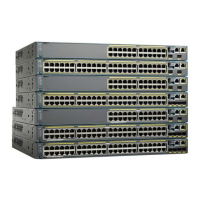SUMMARY STEPS
1.
enable
2.
configure terminal
3.
no monitor session {session_number | all | local | remote}
4.
monitor session session_number source interface interface-id
5.
monitor session session_number filter vlan vlan-id [, | -]
6.
monitor session session_number destination remote vlan vlan-id
7.
end
8.
show running-config
9.
copy running-config startup-config
DETAILED STEPS
PurposeCommand or Action
Enables privileged EXEC mode. Enter your password if prompted.enable
Step 1
Example:
Switch> enable
Enters the global configuration mode.configure terminal
Example:
Switch# configure terminal
Step 2
Removes any existing SPAN configuration for the session.
no monitor session {session_number | all | local
| remote}
Step 3
•
For session_number, the range is 1 to 66.
Example:
Switch(config)# no monitor session 2
• all—Removes all SPAN sessions.
• local—Removes all local sessions.
• remote—Removes all remote SPAN sessions.
Specifies the characteristics of the source port (monitored port) and
SPAN session.
monitor session session_number source interface
interface-id
Step 4
Example:
Switch(config)# monitor session 2 source
interface gigabitethernet1/0/2 rx
•
For session_number, the range is 1 to 66.
•
For interface-id, specify the source port to monitor. The
interface specified must already be configured as a trunk port.
Limits the SPAN source traffic to specific VLANs.
monitor session session_number filter vlan
vlan-id [, | -]
Step 5
•
For session_number, enter the session number specified in
step 4.
Consolidated Platform Configuration Guide, Cisco IOS Release 15.2(4)E (Catalyst 2960-X Switches)
495
How to Configure SPAN and RSPAN

